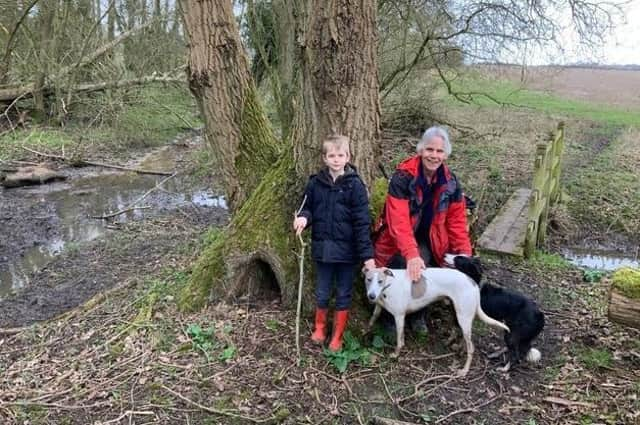Do you live in Harborough and want to become a tree warden?


Do you live in Harborough and would like to become a tree warden?
You can help Leicestershire County Council to plant a remarkable 700,000 trees in Harborough and across the county.
Advertisement
Advertisement
The county currently has over 87 tree wardens, representing 65 parish councils.


They help to organise tree planting in their communities, as well as helping to monitor and care for trees.
The initiative began 30 years ago.
But as the county council steps up its plans to increase tree cover across Leicestershire, a call has gone out for more people to back the bold scheme.
The local authority is particularly keen to recruit new tree wardens in Harborough and Hinckley and in villages such as East Goscote in Charnwood.
Advertisement
Advertisement
Bruce Durham, who’s been a tree warden in Market Harborough for two years, said: “Around a year ago we set up the Harborough Woodland Community Volunteer group, approved to recruit tree wardens in Market Harborough.
“We provide insurance and we organise training coordinated by Leicestershire County Council.
“I would really recommend others to get involved in the tree warden scheme - it’s one of our prime goals,” said Bruce.
“If we can use the tree warden scheme to encourage schools and kids to get involved, then we are building responsible individuals of the future - they won’t break trees but really look after them.”
Advertisement
Advertisement
Richard Ellison, the tree warden for Wymeswold, near Loughborough, for six years, said: “Basically, the role involves getting yourself known in the community and people then come to you to ask any questions about trees in the parish.
“I would recommend being a tree warden and getting involved in the tree network – a group of like-minded people always have strength.
“I’d like to see more tree and hedge planting, this part of Leicestershire is poor when it comes to good quality hedges,” said Richard.
“Hedges stem from the 1700s and enclosures of land with hedges and trees in hedges were mainly ash and elm.
Advertisement
Advertisement
“Elm disappeared about 30 years ago and now ash are dying because of Ash Dieback Disease.
“So there’s a real need for getting more trees planted to replace the ash trees.”
You don’t need to be an expert to become a tree warden.
Full training is given, along with a booklet explaining how to plant trees and how to look after them.
You will also be given the rules and regulations to bear in mind when planting trees or cutting them down.
Advertisement
Advertisement
Cllr Blake Pain, the county council’s cabinet member for the environment and the green agenda, said: “Our vision is for a greener Leicestershire.
“To plant a tree for every resident and to do all we can to protect and enhance Leicestershire’s trees and woodlands so that they will continue to benefit future generations.
“I would urge anyone interested in becoming a tree warden in their community, to sign up and help make a difference.”
For more information about the tree warden scheme and how it could benefit your parish/town council, contact your local tree warden coordinator at: [email protected]
Advertisement
Advertisement
Leicestershire has just six per cent woodland – well below the national average of 10 per cent.
The authority currently manages about 321,000 trees.
But its strategy and action plan, adopted in May 2020, will see that number dramatically increase over the next 10 years as it carries out its pledge to help plant 700,000 more trees – one for every resident.
Dutch Elm disease accounted for a reduction of more than half of all trees in Leicestershire between 1980 and 1998.
The challenges presented by new diseases such as Ash Dieback will result in the further decline of native trees.
The council declared a Climate Emergency in May 2019.
In December 2020 the authority pledged a target to become a carbon neutral council by 2030 and to achieve ‘net zero’ across the county by 2045.